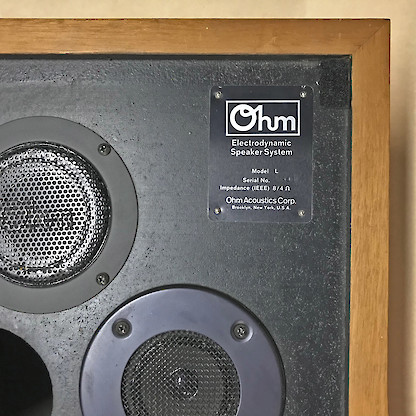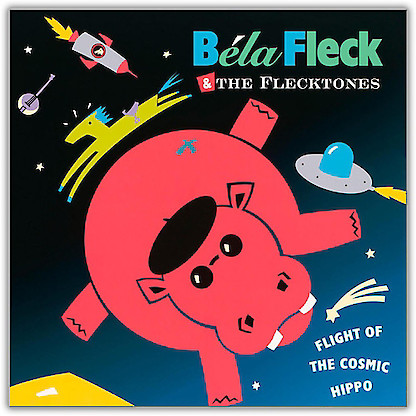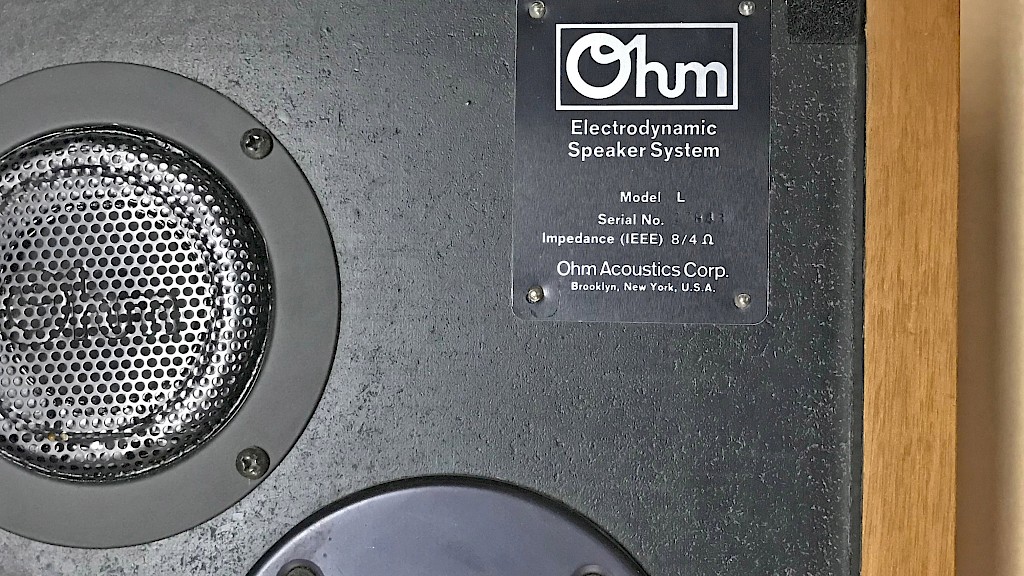What's Watts and Ohms?
What’s Watts Ohms, Speakers & Amps?
How to match them together.
Matching an amp with a speaker is crucial in assuring the maximum enjoyment from both components. With that in mind, Ohm speakers are designed to be compatible with a wide range of amps of varying power levels and from many different manufacturers.
When you’re comparing different amps as well as speakers, you’ll find a variety of specifications. Two terms that you’ll see repeated almost everywhere are Ohms and Watts. In order to make an informed comparison, you really need to understand these two terms, and how they relate to each other.
This tangle of terms Ohms and Watts as used by audio engineers can become very confusing. Let’s try to clarify things.
OHMs
Ohms represent the difficulty of pushing electrical current through a circuit. Georg Ohm (1789-1854) developed the formula for relating Ohms, Amps, Watts and Volts. The unit of electrical impedance was named to honor his basic work – so was our company.
In the twentieth century, the IEEE (Institute of Electrical and Electronic Engineers) established a standard system for rating speakers. They did this because nearly all speakers vary in impedance over their frequency range. The IEEE specified that the NOMINAL rating was sort of an typical or average impedance over the audio frequency range.

They also specified that the lowest impedance over the musical frequency range be called the MINIMUM rating. For example, the Ohm L was rated at 8/4 Ohms. This rating is the NOMINAL/MINIMUM over the audio range, which tells you that across the audio range, the average impedance is 8 Ohms and at some frequency it drops down to 4 Ohms.
Of course, even though this specification was intended to make things clearer, now you’re looking at two numbers instead of one. The natural response for most people who see that, is to get confused.
That’s why the impedance of all Ohm speakers are now rated as a single number that’s about 1.4 times the MINMUM number. We chose 1.4 because a survey of practices throughout the industry showed that this ratio was fairly conservative, and would work well with the vast majority of amplifiers. Most of today’s Walsh speakers get a 6 Ohm rating, which gives a MINIMUM impedance of no less than 4 Ohms – a very common amplifier rating.
WATTs
The power that amplifiers produce is rated in Watts. For many years, the rating of amplifiers was not standardized. The advent of solid-state amps meant that very powerful units could be built on a reasonably sized chassis and run without much danger of setting the house on fire. Thus started the Great Power Wars of the late ‘60s and early ‘70s. Amplifier power was “measured” in a variety of ways. I once saw an ad that referred to an enormous number of lease-breaking watts. Looking at the physical unit, it was clear that you would only achieve that amount of power at the moment when the amplifier blows up. These specifications were at best misleading and at worst, dishonest.
In 1974, the FTC (Federal Trade Commission) stepped in and mandated a testing procedure that was required on literature for all consumer electronics and needed to be more prominently displayed than any other alternate rating system. This was a good attempt to allow comparisons of amplifiers across different manufacturers. Plus, the FTC allowed other ratings to be shown for further clarification (but in smaller sized print). You can still usually see FTC specified in power ratings of amplifiers today. Although, enforcement seems to be declining.
MUSIC
While the FTC standard is concerned with continuous power, the nature of music is that it is a series of specific sounds rather than one long continuous sound. The dynamic nature of music, with wide variation from the softest passage to the loudest passage, is only slightly related to the FTC ratings. Two amplifiers with the same FTC ratings may have very different peak output capabilities. This extra dynamic headroom often is an indicator of a better sounding amplifier on music.
Amplifier specifications: I have learned through experience that the specifications that are not listed are often as important as the ones that are. Some brands deliver very high value electronics and many Ohm owners have used them for years. I remember one integrated amp that tested at about 4 times its rated power on dynamic peaks. It got rave reviews and we had many buyers use them with great success.
In terms of pairing an amplifier with an Ohm speaker, if the amp does not have a 4 or 6 Ohm rating, I would not recommend it – unless experience has shown it works well with our speakers. The 6 Ohm rating is one of the alternate ratings to the basic FTC rating. This means the amplifier manufacturer has taken the 6 Ohm load into their design targets.
As always, if our customers have specific questions, we are pleased to provide whatever information and assistance we can.
Songs to Make Your Speakers Sing
Flight of the Cosmic Hippo
By Béla Fleck and the Flecktones

The Flight of the Cosmic Hippo by Bela Fleck and the Flecktones is both the title of their second album, and the title track (number four) from that album. It features Victor Wooten on the electric fretless five string bass guitar.
This track wastes no time in establishing itself. At the very first note, the bass guitar comes in at 37 Hz and slides down to about 30. If the low frequency extension of your speakers is already rolling off when you get below 40 Hz, the lowest note in the bass line will not be reproduced at the same level as the rest of the music. When you do have a well-balanced system with good bass extension, this track makes a very effective, and very enjoyable demonstration of your system’s low end.
40 Hz is the long-time standard target for deep bass set by AR in the 1960s with the popular 1W and 3A. Many speakers can play lower: Ohm got down to 32 Hz when we introduced the Model H way back in 1975, using the same size box as the 3A! Today, we can reproduce a whole octave below that with our top-of-the-line F-5015. You can find some rare demonstration material with some kind of pipe organ or cannon shot that goes down even below 20 Hz.
But this bass guitar really seems impressively low. The typical four string bass guitar that we’re all familiar with can play notes as low as 41 Hz, but it doesn’t live down there. Usually most of the notes are much higher. In this particular case, this extra-deep bass spends most of its time growling at you from its lowest register.
The high frequencies and bright timbre of the banjo and harmonica provide the necessary counterweight to the super low bass line to sound balanced. Usually at Ohm we use the voice as a reference for balance, but this instrumental track avoids sounding murky and bass heavy by balancing the super-low bass guitar with an equal amount of sound from the other end of the spectrum.
Subscribe to Ohm News & Views to get the latest posts in your inbox
John Strohbeen Author
John Strohbeen was the President and Chief Engineer of Ohm Acoustics from 1978-2023.


